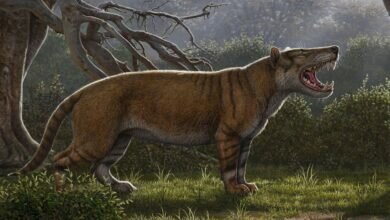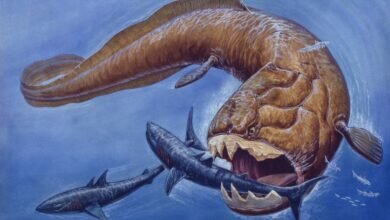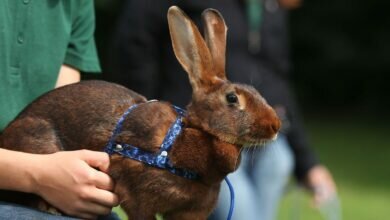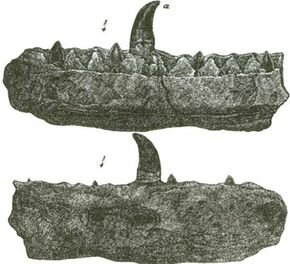
MEGALOSAURUS (MEG-ah-loh-SORE-us)
Period: Middle Jurassic
Order, Suborder, Family: Saurischia, Theropoda, Megalosauridae
Location: Europe (England)
Length: 30 feet (9 meters)
Megalosaurus was the first dinosaur to be described as a reptile. The bones were discovered at Stonesfield in Oxfordshire, England. The fossils included parts of a back leg, hip bones, a shoulder blade, and a lower jaw. James Parkinson named it Megalosaurus, which means “great lizard.” Dinosaurs were not known then, and scientists thought it was a giant lizard.
For many years, scientists identified nearly every scrap of any large theropod fossil in England or Europe as Megalosaurus. Even recently, specimens from the United States and Australia were called Megalosaurus. For this reason, scientists refer to Megalosaurus as the “waste basket” genus. Also, the family Megalosauridae has been the “waste basket” family because scientists included dinosaurs as different as Tyrannosaurus, Allosaurus, and Dilophosaurus. Scientists have sorted out many of the fossils that were incorrectly called Megalosaurus or put in Megalosauridae, and placed them in the correct genus and family. There is still much work for scientists to do before they correct everything.
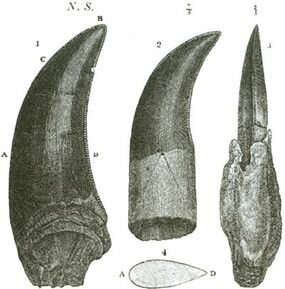
Despite the mistakes, Megalosaurus is still an important dinosaur, though it is not well known. Most of the bones of the original specimen arc important, particularly the jaw and hip bones. These bones show that it was a large theropod, weighing over one ton. The large, serrated teeth in the robust jaw bone show it was a powerful predator. Like most modern meat-eating animals, it probably ate any animal it could catch.
The Late Jurassic theropod Torvosaurus could be a North American relative of Megalosaurus. However, even though there are enough similarities to group them in the same family, there are enough differences that they probably do not belong in the same genus.

MEGALOSAURUS (MEG-ah-loh-SORE-us)
Period: Middle Jurassic
Order, Suborder, Family: Saurischia, Theropoda, Megalosauridae
Location: Europe (England)
Length: 30 feet (9 meters)
Megalosaurus was the first dinosaur to be described as a reptile. The bones were discovered at Stonesfield in Oxfordshire, England. The fossils included parts of a back leg, hip bones, a shoulder blade, and a lower jaw. James Parkinson named it Megalosaurus, which means “great lizard.” Dinosaurs were not known then, and scientists thought it was a giant lizard.
For many years, scientists identified nearly every scrap of any large theropod fossil in England or Europe as Megalosaurus. Even recently, specimens from the United States and Australia were called Megalosaurus. For this reason, scientists refer to Megalosaurus as the “waste basket” genus. Also, the family Megalosauridae has been the “waste basket” family because scientists included dinosaurs as different as Tyrannosaurus, Allosaurus, and Dilophosaurus. Scientists have sorted out many of the fossils that were incorrectly called Megalosaurus or put in Megalosauridae, and placed them in the correct genus and family. There is still much work for scientists to do before they correct everything.

Despite the mistakes, Megalosaurus is still an important dinosaur, though it is not well known. Most of the bones of the original specimen arc important, particularly the jaw and hip bones. These bones show that it was a large theropod, weighing over one ton. The large, serrated teeth in the robust jaw bone show it was a powerful predator. Like most modern meat-eating animals, it probably ate any animal it could catch.
The Late Jurassic theropod Torvosaurus could be a North American relative of Megalosaurus. However, even though there are enough similarities to group them in the same family, there are enough differences that they probably do not belong in the same genus.

